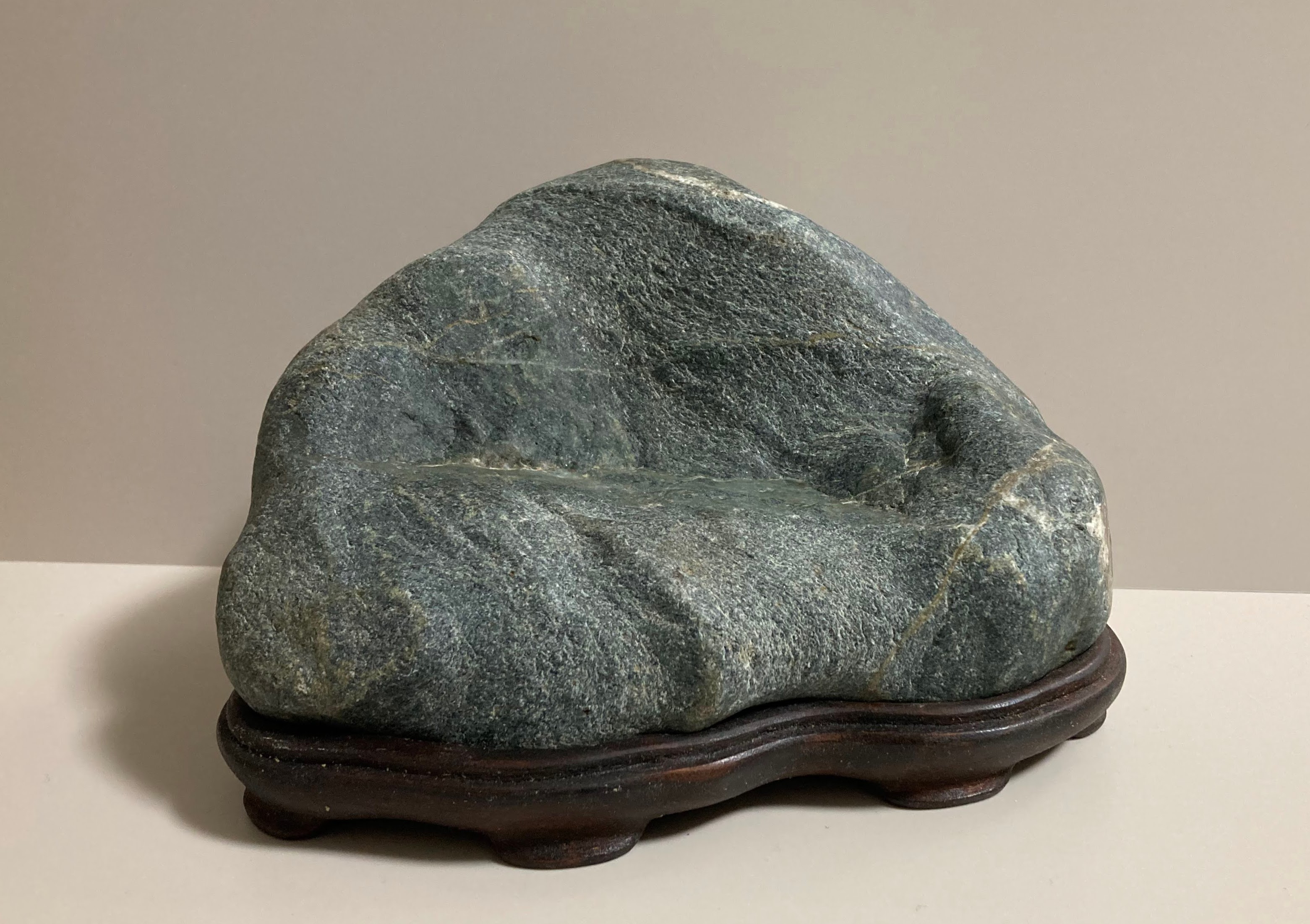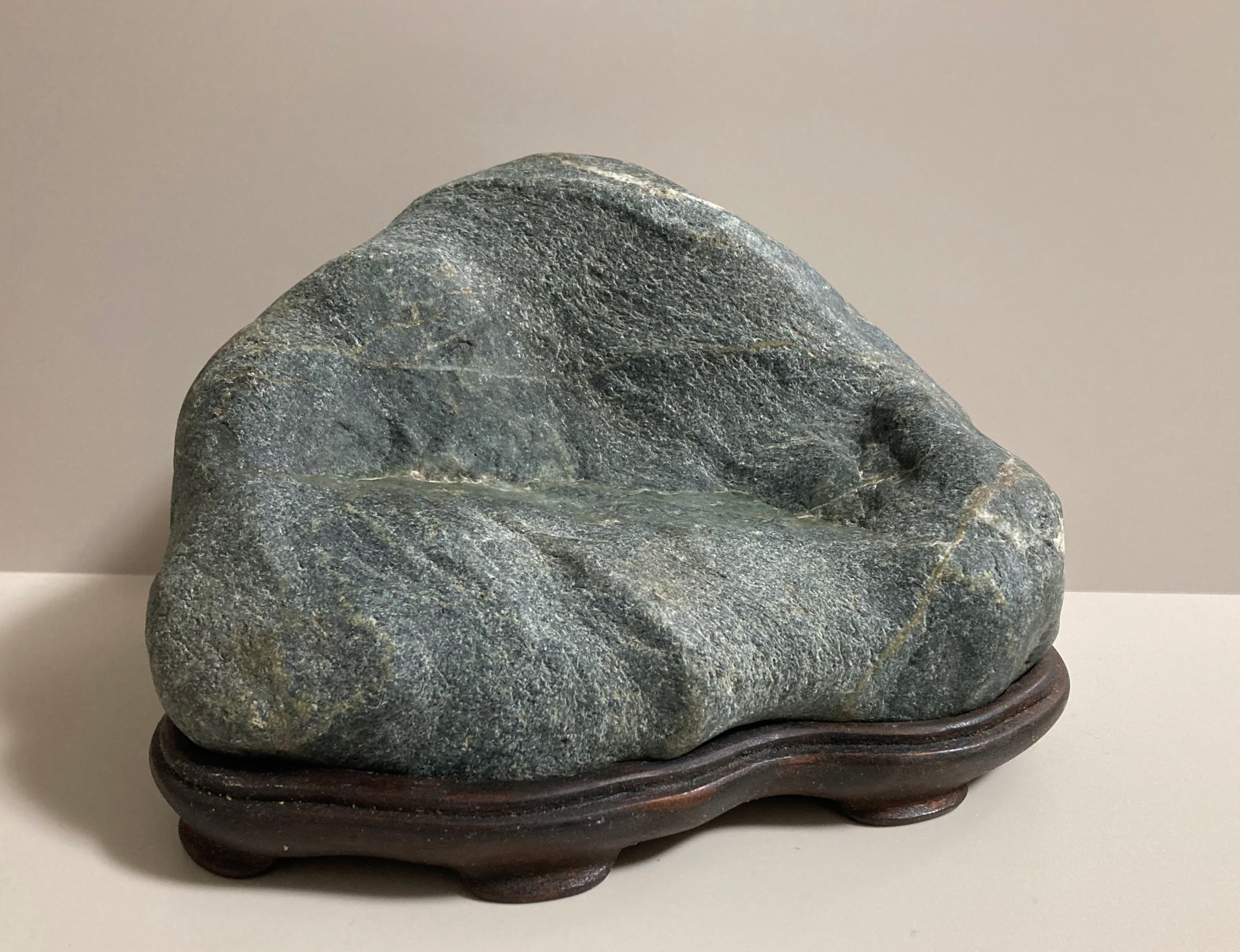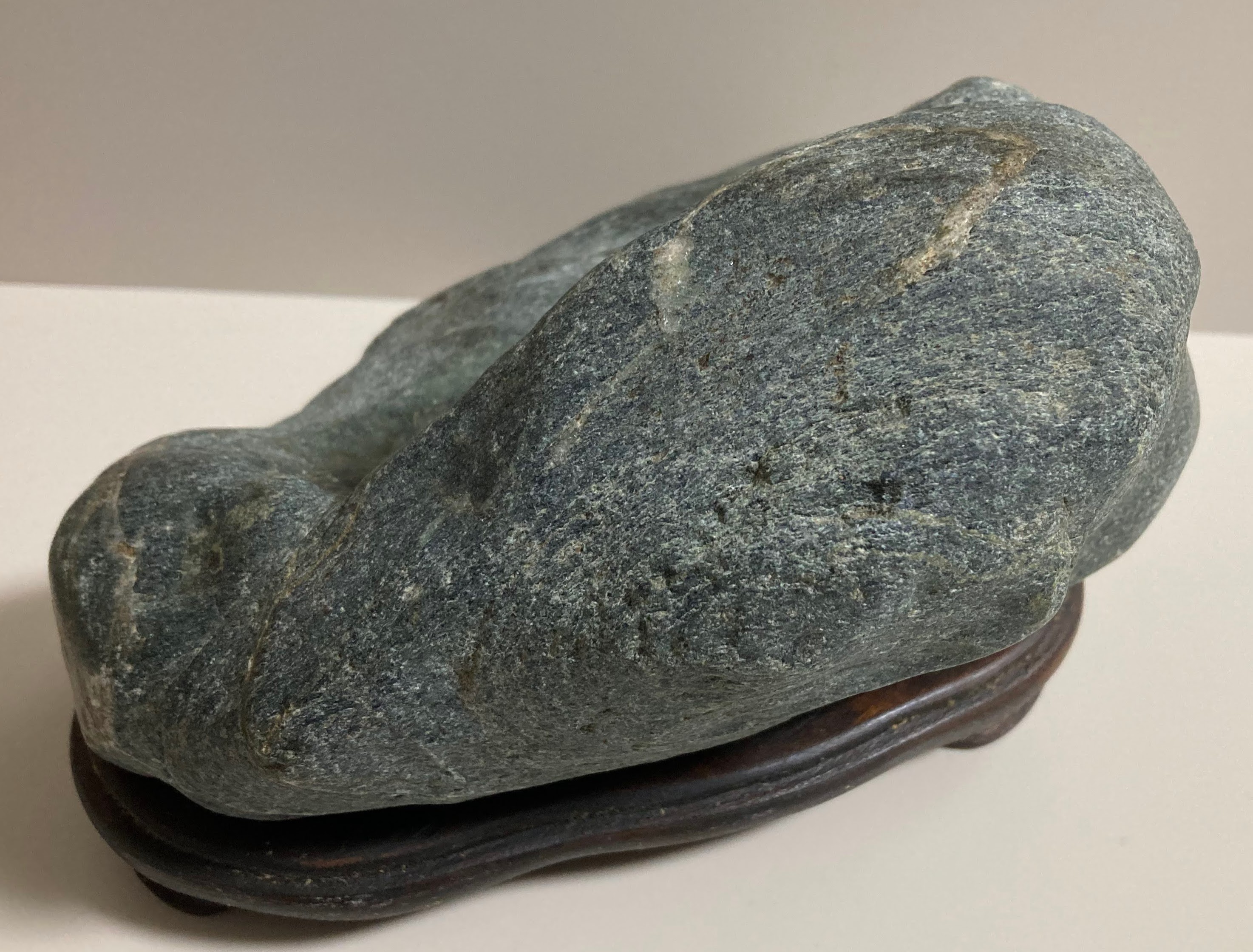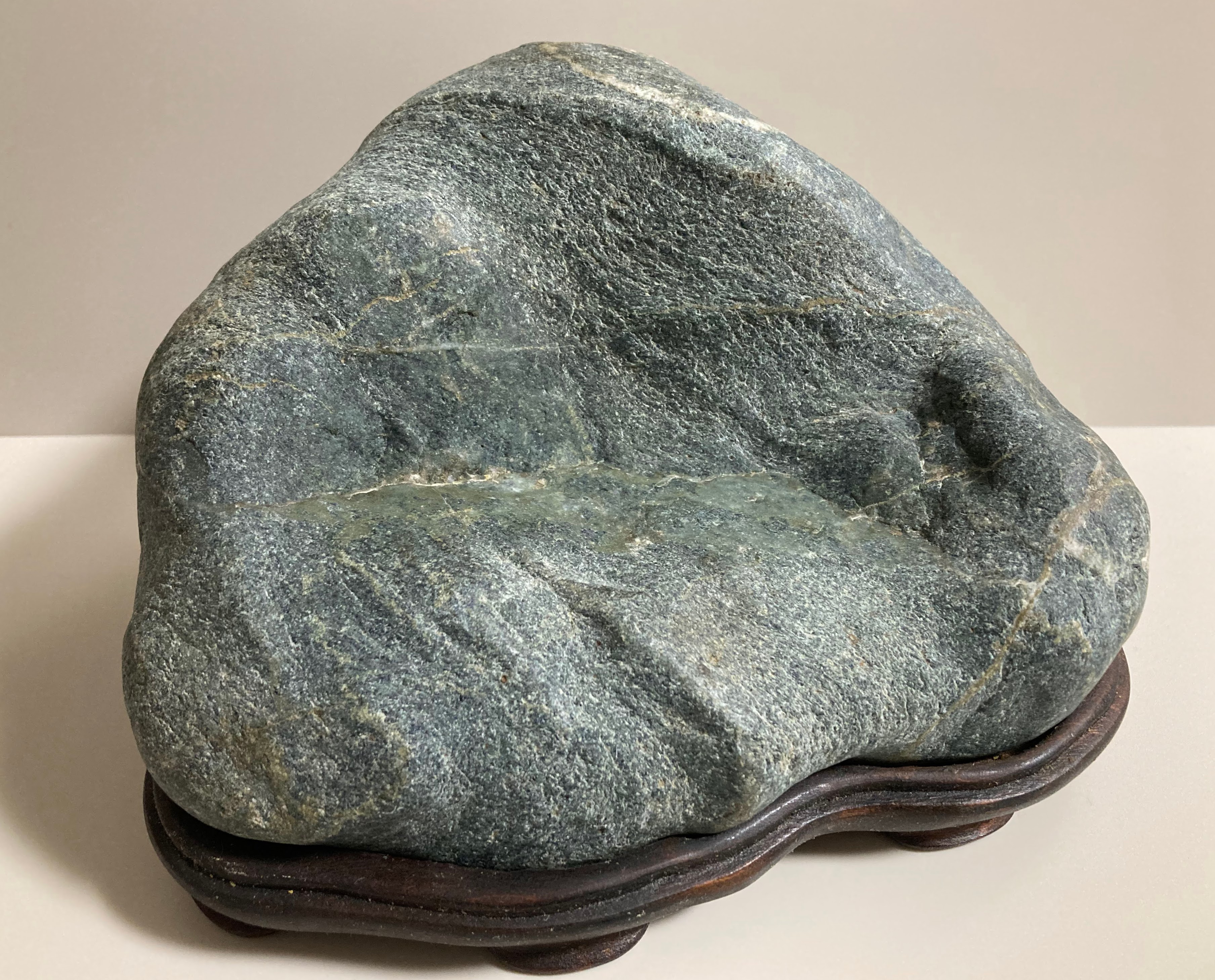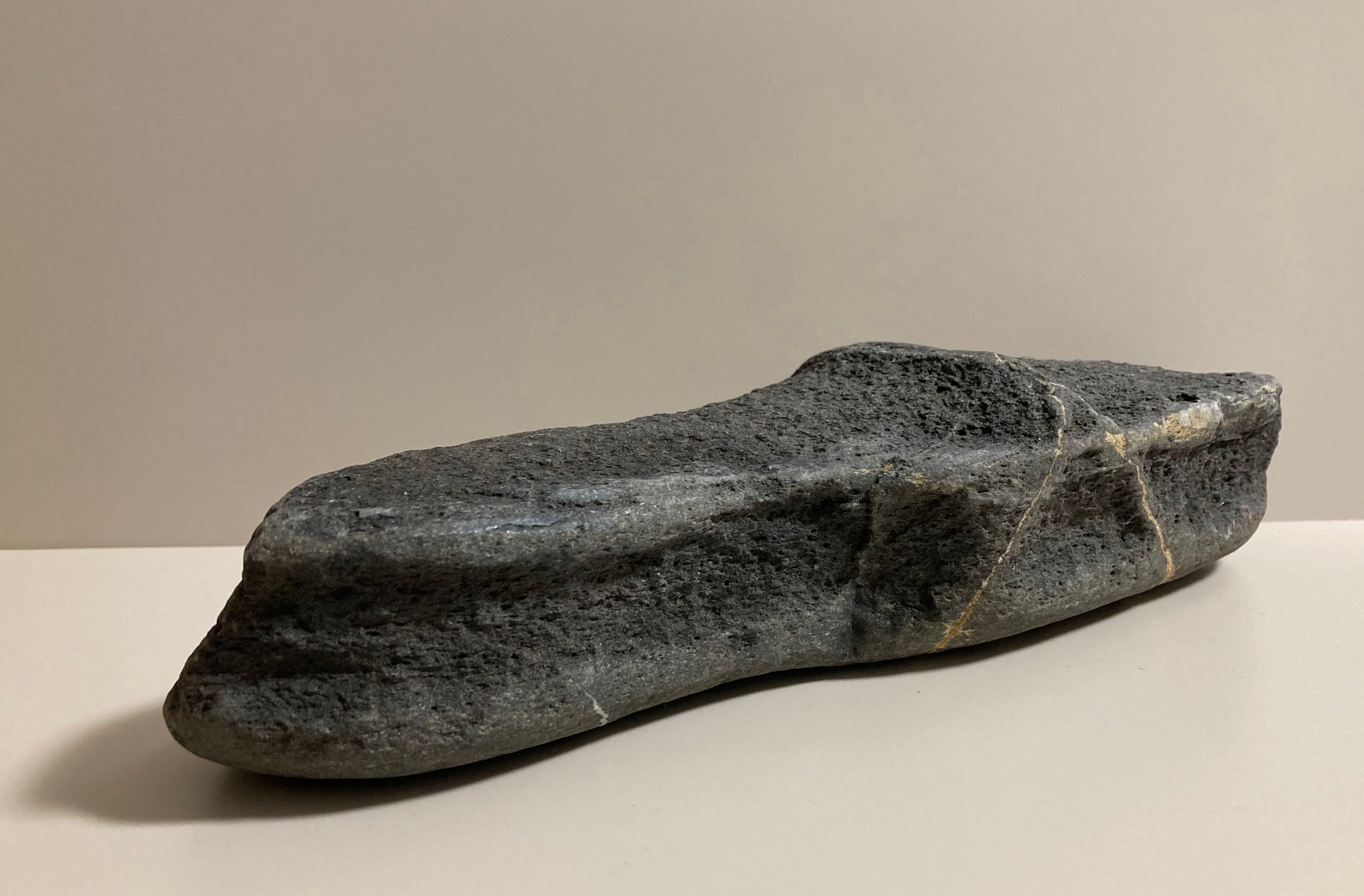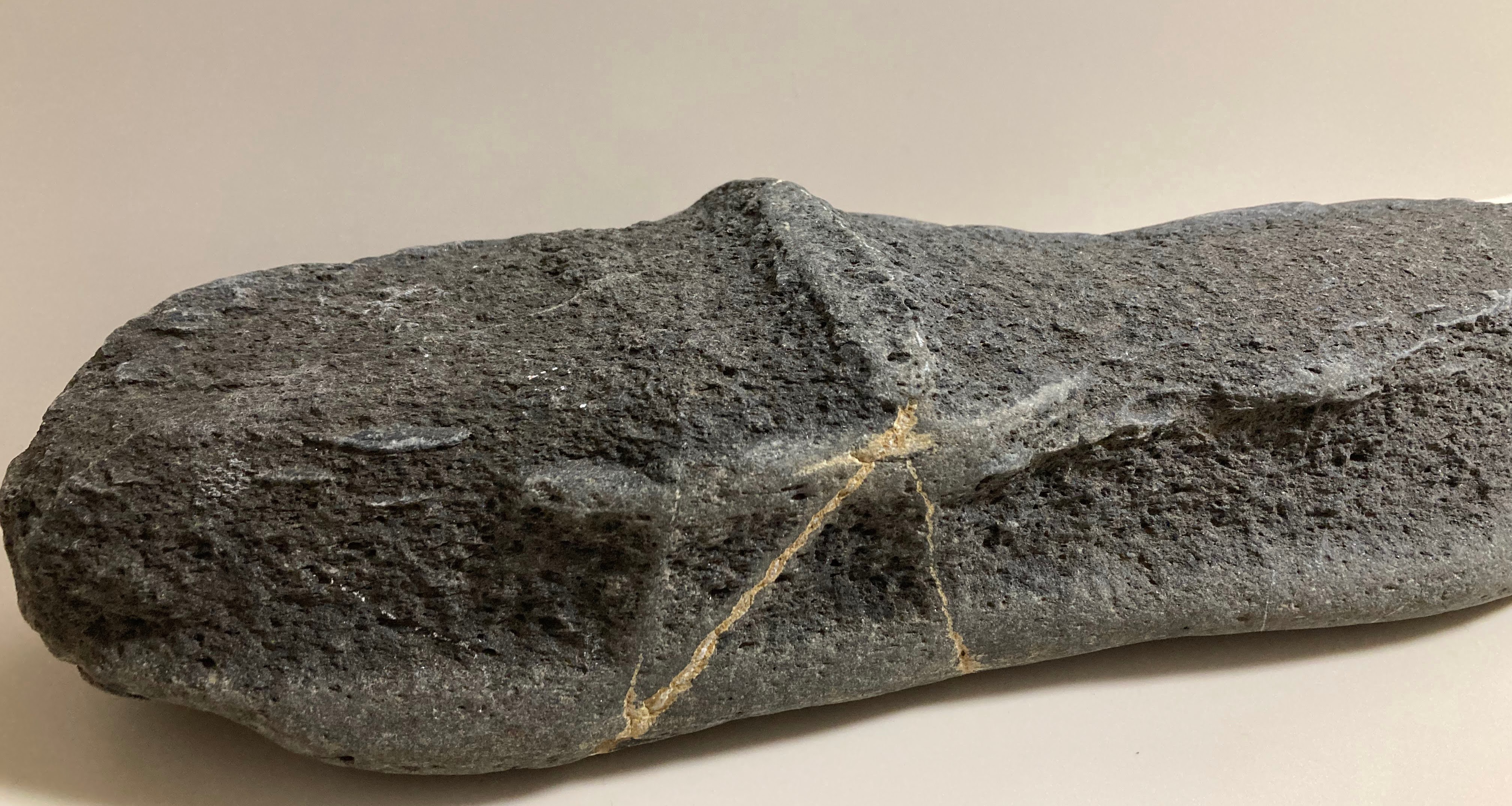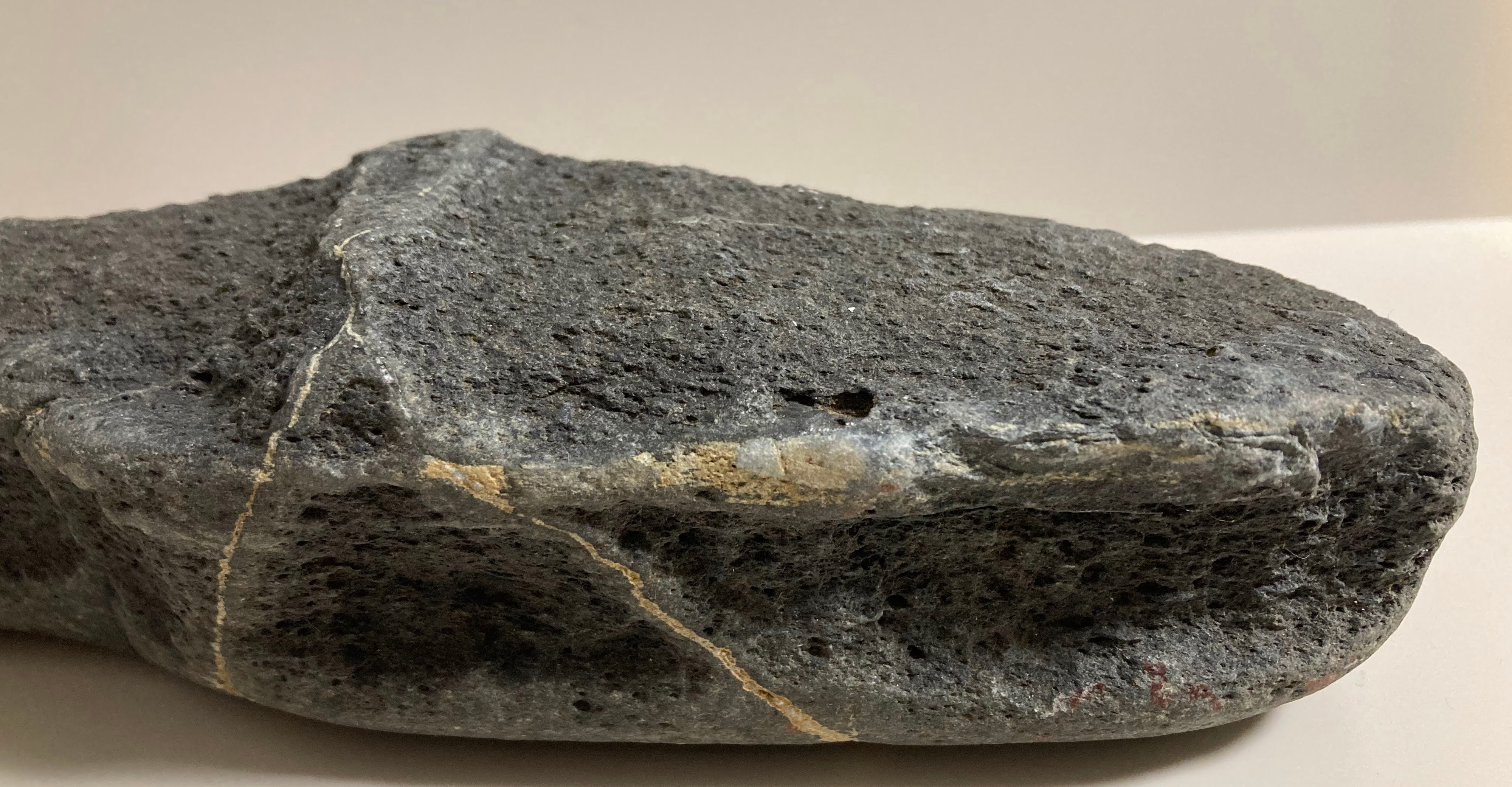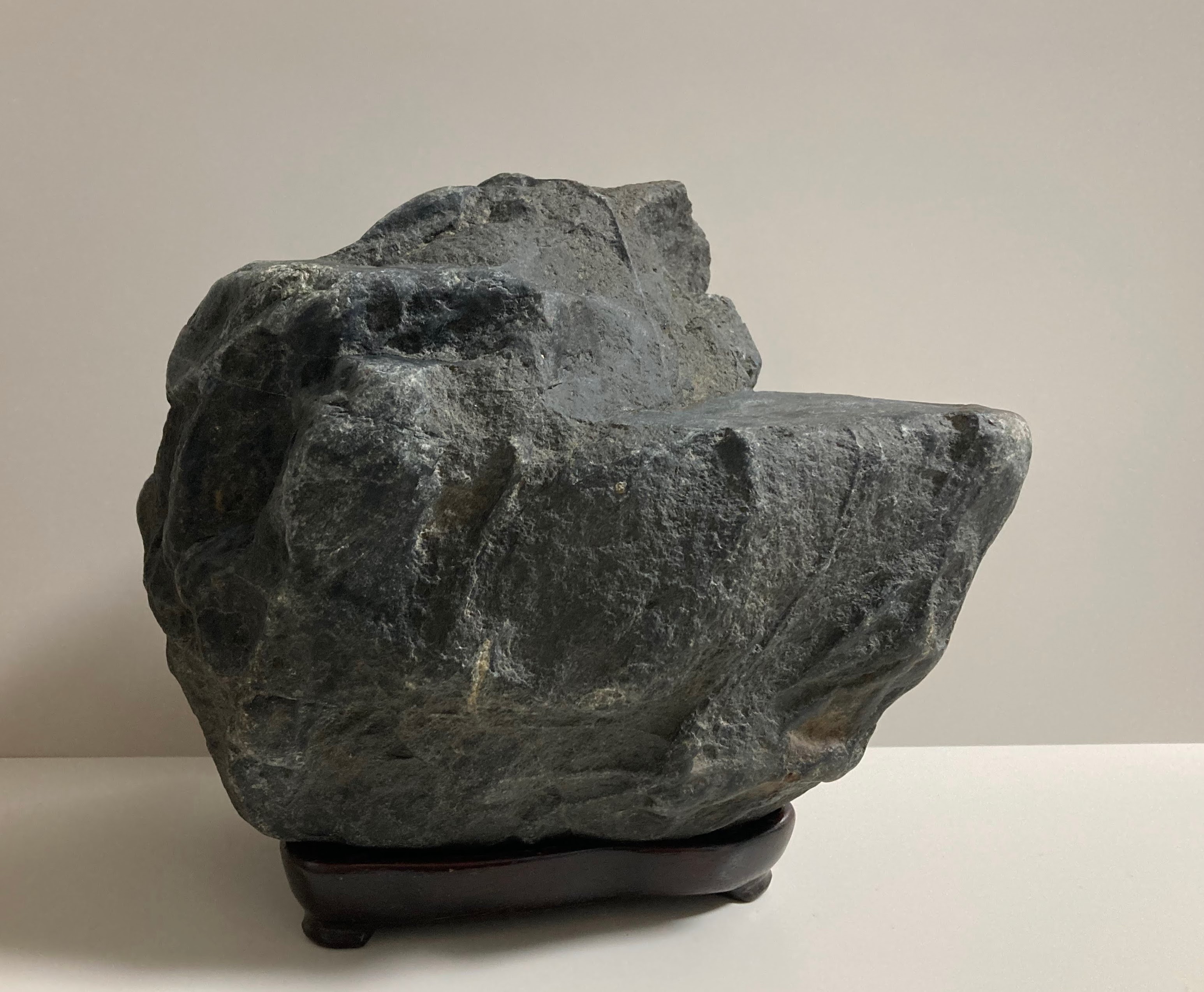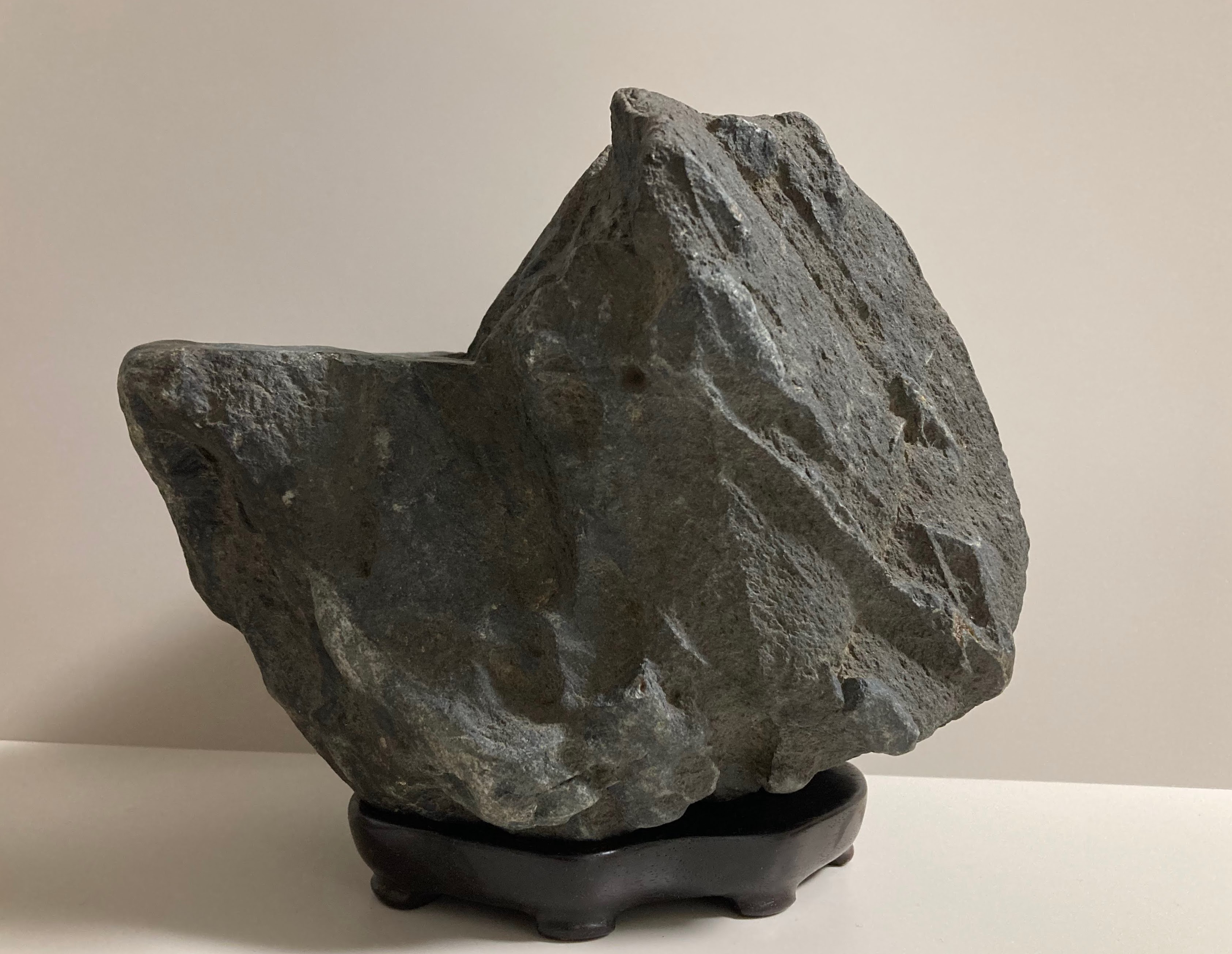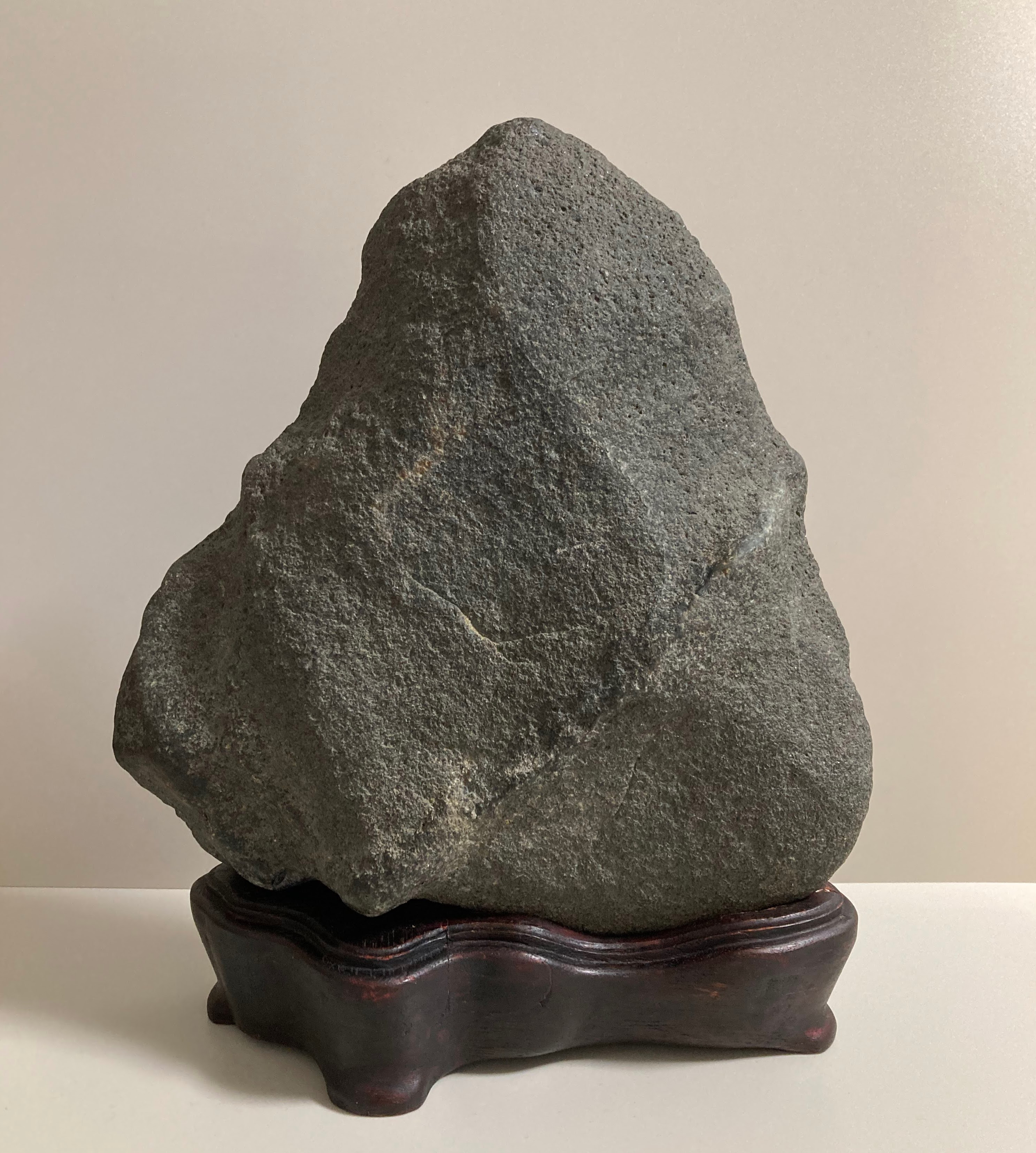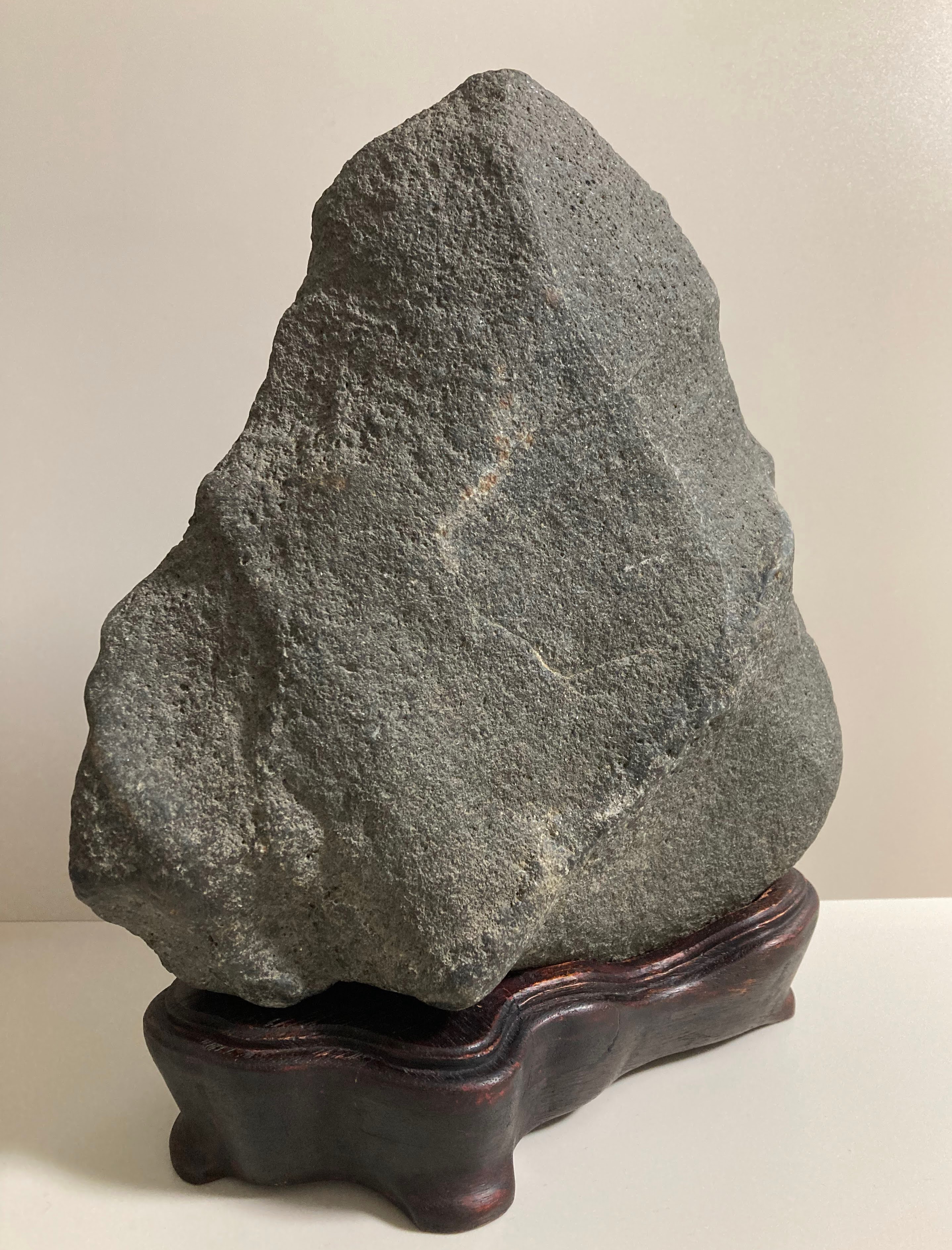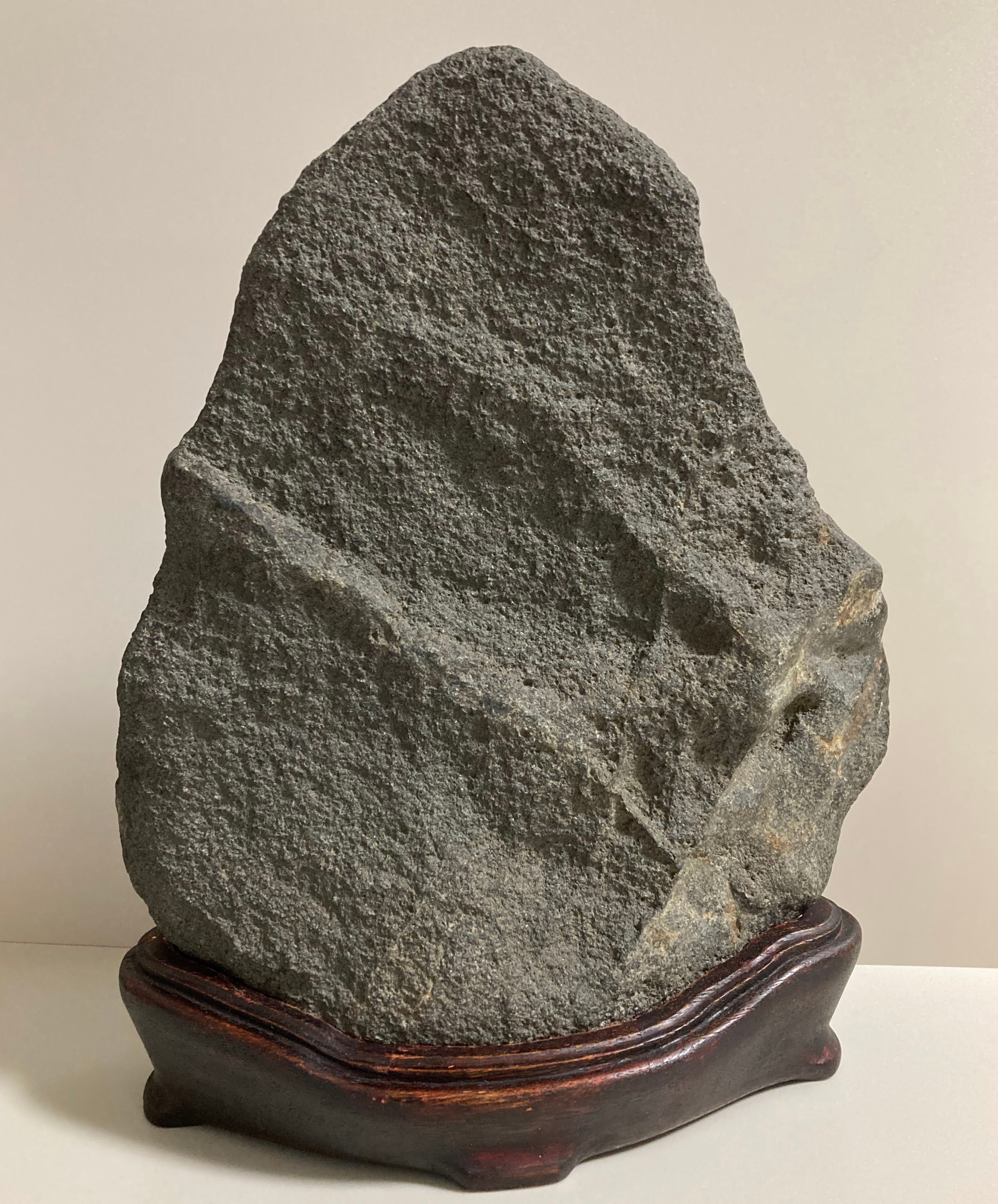Sajigawa-ishi-II, 佐治川石
Sajigawa-ishi
Continuing with Sajikawa-ishi. Sajigawa-ishi is considered to be one of the three major Suiseki, along with Kamogawa-ishi and Setagawa-ishi.
It is thought that one of the reasons why it is considered one of the three major suiseki is not only the quality of the stone, but also the abundance of stone types.
Sajigawa-ishi, Deep water
Hekitanseki is one of the seven stones or the ten stones of the Sajigawa-ishi.
Hekitan means a deep pool of blue water.
Since Hekitanseki was once called Blue black stone, it would be appropriate to think of the green to blue-black Sajigawa-ishi as Hekitanseki. It is true that in addition to black, Sajikawa stones also come in green and blue-black colors.
This stone is closer to green than blue, and there is some doubt as to whether it can be strictly called Hekitanseki.
At first, I thought that the name "Hekitanseki" was taken from the "blue" of jasper and the "tan" of KamuiCotan-seki. I thought that this stone was suitable for Hekitanseki, but then I changed my mind when I learned that the word "Hekitan" existed and that it meant a deep pool of blue water.
This stone has been worn to the point of being rounded, with noticeable river wear, therefore you can see the fine composition that is densely packed.
Also, the flattened area in the middle is so dense and smooth that you might think it is jasper.
Sajigawa-ishi, Deep water
This stone is characterized by the contrast between the concave portions known as Senbondachi, which are unique to Sajigawa-ishi, and the smooth convex portions, and the high quality of the stone.
The concave parts are deep black, and the convex parts are blue-black with a bluish tinge. Although the blue is slightly lighter, the color tone is called blue-black in other production areas. For this reason, it is called Hekitanseki.
The characteristic of Sajigawa-ishi is that it looks like minute needles are densely packed together, but even among Sajigawa-ishi, there are various types of stones, including sparsely and densely packed stones.
This stone is dense enough to be worthy of the name Senbondachi, and its beautiful shape looks like a battleship or a sports car depending on the angle.
Sajigawa-ishi, True black
The Sajigawa-ishi here has noticeable river abrasions and is very dense. There are no needle-like convexities, and even if there is a concave part, you can't tell unless you look closely.
The stone surface reminiscent of a quay is attractive.
Sajigawa-ishi, Wear out in river
It is said that the real appeal of Sajigawa-ishi as suiseki lies in its surface, and it has fascinated many suiseki artisans since ancient times.
While the rough surface of the mountain stones is gone, you can also feel the charm of the stone surface that has been worn by the river. It is sometimes said that when the rough surface has disappeared due to wear, the core of the stone is exposed, but this stone can be said to be a stone that allows you to enjoy the core of the stone, which has been rubbed by the river.
The stone surface, which looks like a condensation of microscopic granules, glitters and reflects depending on the light, giving it a very elegant feel. Its rounded shape may seem gentle at first glance, but the stone core gives it a rugged and sophisticated feel, giving it the mysterious impression that it is two sides of the same coin.


